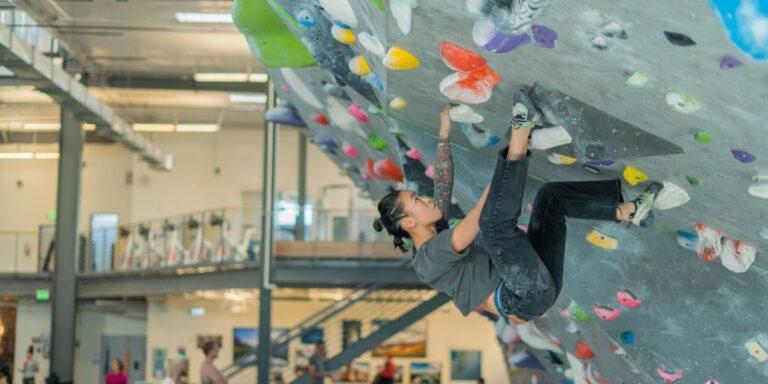How did U.S. exercise trends go from reinforcing white supremacy to celebrating Richard Simmons? That evolution is explored in a new book by a historian of exercise, Natalia Mehlman Petrzela, author of the book Fit Nation: The Gains and Pains of America’s Exercise Obsession , out Jan. 2023.
Nowadays, at the beginning of every New Year, many Americans hit the gym to work off their holiday feasts. This momentum usually starts to fade in mid-January, according to a 2019 analysis of data on fitness tracking apps by Bloomberg. But such new year’s resolutions are pretty new—as is the concept of exercise as a way to improve bodily health.
“It’s really not until the 1980s that you start to have a consensus that everybody should be doing some form of exercise,” says Mehlman Petrzela, a professor at the New School in New York City. That’s partly the result of the women’s movement of the 1960s and 1970s, which fought for Title IX, allowing girls to play school sports. That pushed back on notions that girls and women aren’t capable of doing vigorous exercise because they’re fragile.
Perfect for reading on the treadmill or stationary bike, the below conversation with Mehlman Petrzela outlines the earliest ideas on exercise, delves into the history of various popular workouts, and the outsize influence of Richard Simmons.
Your book Fit Nation starts out by talking about how fat was something to aspire to and that was a sign of wealth and healthiness. How did Americans go from a mentality of “fat is good” to “skinny is better?”
One of the things I set out to do in this book is to look at the change in how we think about our bodies and what’s considered attractive. Until the 1920s or so, to be what would be considered today fat or bigger, was actually desirable and actually signified affluence—which is like the polar opposite of today, when so much of the obesity epidemic discourse is connected to socio-economic inequality and to be fat is often to be seen as to be poor.
How did that happen? Well, in a moment when actually there wasn’t a lot of access to caloric foods, to be fat showed that you could afford these things that were out of the reach of most people and also you could afford to rest, like you weren’t out there doing manual labor all day. As that caloric food became more accessible, and as more people were doing sedentary white-collar work and had access to cars and leisure, somebody who could resist those caloric foods, exercise, and have a thin body, was seen as more desirable.
Read more: The history behind New Year’s resolutions to exercise more
What’s the most surprising thing you learned in your research?
It was super interesting reading the reflections of fitness enthusiasts in the early 20th century. They said we should get rid of corsets, corsets are an assault on women’s form, and that women should be lifting weights and gaining strength. At first, you feel like this is so progressive.
Then you keep reading, and they’re saying white women should start building up their strength because we need more white babies. They’re writing during an incredible amount of immigration, soon after enslaved people have been emancipated. This is totally part of a white supremacy project. So that was a real “holy crap” moment as a historian, where deep archival research really reveals the contradictions of this moment.
This content was originally published here.



















